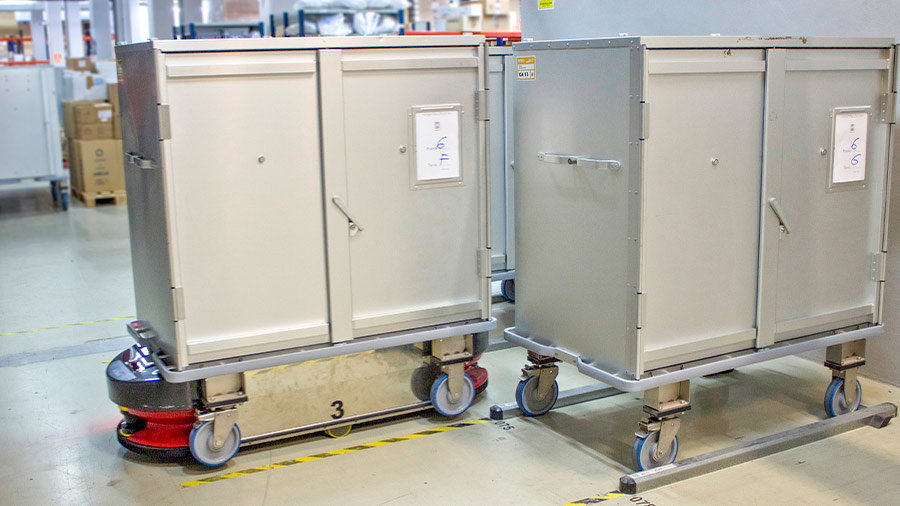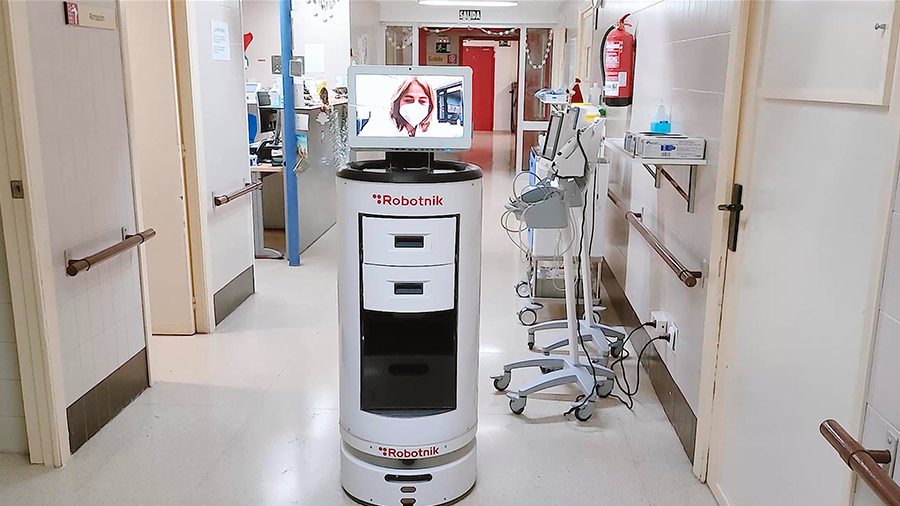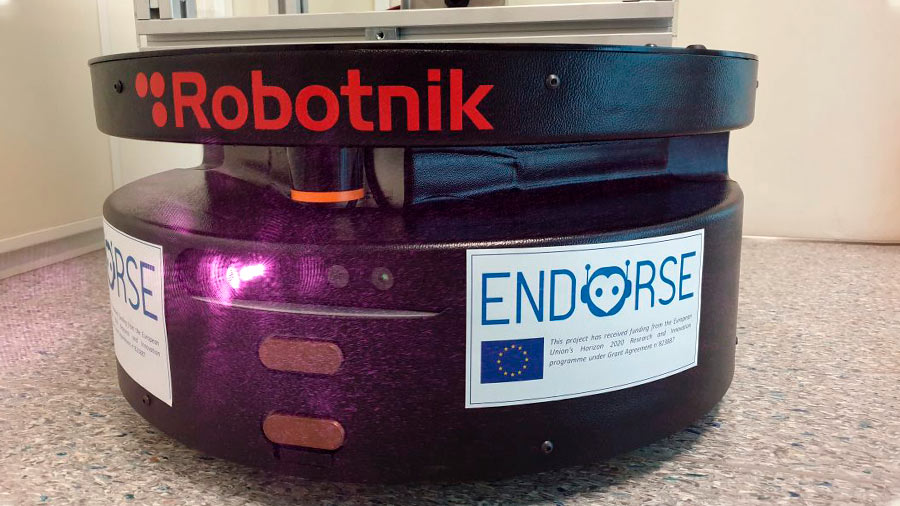The incorporation of robotics in healthcare environments is becoming increasingly common. Currently, task automation is adapted to any sector and robotics in medicine is frequently used thanks, in part, to the evolution of technologies such as 5G, AI or augmented reality.
The use of robots in hospitals has become a mainstay for the healthcare sector, especially in recent times. Robotics applications in medicine, and in hospitals in particular, have experienced a definite boost in the fight against COVID-19.
Collaborative mobile robots can also become excellent hospital assistants, providing support in operating rooms, ICUs or risky areas for the healthcare team. Mobile robotics applications have also become tools that greatly improve the quality of life and provide autonomy to dependent people.
What is the use of robots in hospitals? What kind of robots are being used in medicine?
Collaborative robotics applied to the healthcare sector is an excellent tool that greatly improves the quality of life and provides autonomy to dependent people. Collaborative mobile robots, for example, can be adapted to robotic or motorized shower systems for people with functional disabilities, allowing them to shower on their own by giving commands to the robot.
We are also talking about advantages such as administrative support, early detection of certain diseases, predictive systems or patient monitoring.
Types of robots in hospitals
Some of the tasks in the health sector for which Robotnik robots are used would be:
- Food transport and supply support.
- Cleaning or disinfection tasks.
- Storage and distribution of medicines.
- Surgical assistance.
- Administrative and logistical tasks that are routine and burden the healthcare workers.
- Tele-assistance.
R&D for healthcare robotics
Since 2002, Robotnik has participated in more than 60 research projects, most of them at European level. Currently, some 30 projects of different nature are underway: some with objectives oriented to logistics, others to the health sector or also to the agri-food sector, among others. This makes it possible to use intelligent, autonomous and collaborative mobile robots that enable the creation of more efficient industrial processes with a better use of resources, which translates into higher productivity in general.
Examples of robotics R&D projects in medicine in which Robotnik participates:
PHARAON: Pilots for healthy and active aging.
PHARAON aims to contribute to improving the aging conditions of the European population by creating a set of open and customizable platforms with advanced services, devices and tools including IoT, artificial intelligence, robotics, cloud computing, smart devices, Big Data and intelligent analytics.
Robotnik will provide its mobile platforms so that they can be used in the pilots, in addition to assisting with the integration of the technology developed within the project. These robots will be tested in various hospitals in Europe.
ENDORSE: Robotic fleet for logistics applications in healthcare and commercial spaces.
Indoor spaces such as hospitals, hotels and offices offer great potential for the commercial exploitation of logistics robotics. Four pillars of innovation are being pursued in this project:
- Multi-robot navigation without infrastructure, i.e., minimal (if any) installation of sensors and communication buses inside the building for locating robots, targets and docking stations.
- Advanced HRI to resolve deadlocks and achieve efficient sharing of spatial resources in crowded spaces.
Implementation of ENDORSE software as a cloud-based service that facilitates integration with corporate software solutions such as ERP, CRM, etc. - Reconfigurable and modular hardware architectures so that various modules can be easily interchanged.
- Robotnik will develop the modular hardware interfaces that will support the Robotnik RB-1 BASE mobile robot, so that different functional modules can be easily interchanged.
ODIN: Transforming the future of healthcare in Europe’s hospitals through AI.
This project addresses 11 hospital care challenges by seeking solutions that combine robotics, IoT and AI.
In this case, the application of robotics in hospitals is a support to real problems faced every day by healthcare staff. For example:
- Autonomous and collaborative robots can reduce the workload of overburdened hospital staff.
- Optimizing resources through shared data collection.
- Increased patient and staff safety through tools and robots that avoid exposure to hazardous areas.
- Reducing unnecessary hospital stays through the latest technologies in IoT support services and rehabilitation robots, increasing hospital planning possibilities.




